On Friday, February 29, my wife Mary and I had back-to-back doctor’s appointments at Kaiser Permanente in Moreno Valley—she to talk about a puzzling lethargy that had been dogging her and I to talk about an odd chest pain that I thought a remnant of the flu I’d had in late January.
Dr. McDougal listened to my heart and then listened to my description of the pain. She said that it didn’t sound like angina, but she wanted to make sure by sending me for a stress test at the hospital facility in Riverside, a seventeen-minute drive away.
“Do you want me to drive there now?” I asked.
“Oh no, we’ll get an ambulance for you.”
What I thought could be serious but probably wasn’t, and what Dr. McDougal said could be serious but probably wasn’t, was sufficiently serious to warrant an ambulance ride from one Kaiser facility to another. One doesn’t have to be that creative to imagine how this made me feel. The visit itself was quickly becoming one big stress test.
When the EMTs arrived, they took my blood pressure—which for some odd reason was soaring—and asked if I was experiencing chest pain.
My point, and the whole point of the visit, was that I did experience chest pain when I exerted myself, but was not doing so now. They heard, I guess, that I “did” experience chest pain and, along with the high blood pressure, found reason enough to judge this case beyond them. They called 911.
Within minutes the halls of my doctor’s office were crawling with burly firemen in response gear asking me questions about the pain and about my cardiac history. When I told them I was feeling more or less “fine,” they patted my shoulder, congratulating me on my manly bravery.
The problem is that the responders could not take me to Kaiser but needed to take me to the nearest hospital—Moreno Valley Community Hospital. One bumpy ride later, I was in the MVCH emergency room, talking to a Dr. Green who told me that my blood work didn’t indicate a heart attack, but that he would recommend a stress test and angiogram, adding, “but Kaiser will probably want you in their facility.”
They did. Two hours later, another ambulance transported me to Kaiser, Riverside, where I was admitted and where, the next morning, I took a stress test. I stepped on the treadmill and began walking, wires dangling from adhesive patches placed strategically on my body.
The pain reappeared—a burning sensation about my sternum—soon after I began walking. But John Henry was a steel-driving man, and I’m a walking man. No treadmill is going to get the best of me. So I soldiered on through the pain and finished the test. Not in silence, however. Sounds of exertion gave way to gasps of irritation, ultimately replaced by mild swearing through my clenched teeth.
When the attending doctor spoke to me that evening, she said the cardiologist would be speaking to me on Sunday, because my test was positive. My first thought was, If the test is positive, why aren’t I being sent home? I soon learned that in the field of medicine, positive is negative.
Sunday morning, Dr. Beauvoir, my new cardiologist, said that my test was inconclusive, but he was very troubled that I’d reported feeling pain while on the treadmill. For that reason alone, he wanted to look at the results of an angiogram.
Therefore, the next morning I was prepared for another adventure. Kaiser in Riverside does not perform angiograms. Kaiser in Fontana does, so late Monday morning, I was in another ambulance on the twenty-minute ride to Fontana.
In the catheterization lab, I was spread out on the table while Dr. Schaeffer inserted a catheter into my femoral artery and pushed a tube through my heart to diagnose the problem. Later he explained to Mary and me that it appeared that a small branch of an artery was 98 percent clogged, and that the condition could be treated either with medication or with angioplasty and a stent. After talking with Mary, I opted for the stent.
Monday afternoon, I found myself in another ambulance on its way to St. Bernardine’s Medical Center in San Bernardino. Even though the ride was bouncy, I had to remain as still as possible, since the insertion hardware—called a sheath—had been left in my femoral artery. At St. Bernardine’s, Dr. Wong looked at the video of my heart, shot when I was in the lab at Kaiser, Fontana. He too thought the branch affected by the blockage was of minor significance, but he would attempt the stent placement nonetheless.
On the table in the catheterization laboratory at St. Bernardine’s, I was once again fed anxiety-reducing medications, and the catheterization process was performed anew. One must remain awake and relatively alert during this process so that the doctor can monitor a patient’s real-time report of any pain or discomfort—indicators that something is amiss. “You still doing okay?” is the oft-repeated question. Most of the time, a patient is looking at the ceiling or craning his neck, around a bulbous mechanical eye zigzagging across the chest, to see the monitor displaying the image of the heart in action. One’s heart must be in action or one is, as the medical field terms it, dead.
As the angioplasty balloon was expanded in the affected artery, Dr. Wong exclaimed, “Oh wow, would you look at that!”
Such words when uttered by one’s doctor while one is in the middle of an invasive procedure involving a wire snaking through the chambers and arteries of one’s heart are somewhat disconcerting. When I asked what the problem was, Dr. Wong said, “I’ll let you see the pictures later.” He pushed the stent into place.
Viewing the pictures, I could indeed see the reason for Dr. Wong’s surprise. When the branch of the artery was expanded, one could see clearly that the branch in question was not a secondary offshoot but the main branch itself, from which other vessels forked as it journeyed around the bottom of my heart.
Monday night I recovered in my room. Early Tuesday evening, I was released from the hospital into the custody of my wife.
Many years later, I’m still here and feeling, actually, great.


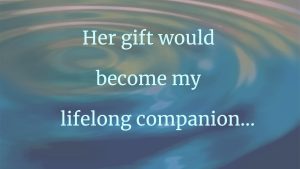
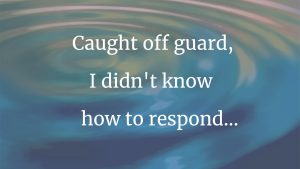
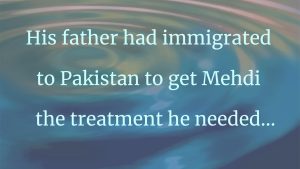
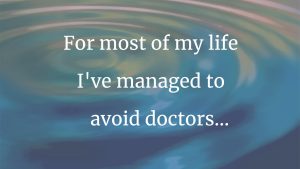
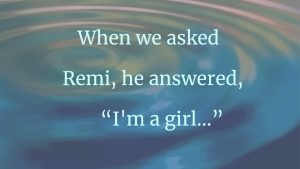
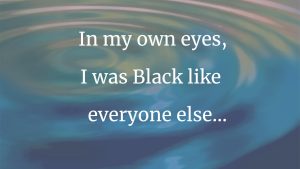

17 thoughts on “One Big Stress Test”
I had a cardiac cath procedure five years ago and it still haunts me. The MASH style set up was intimidating, getting my arms locked down for an approach through the wrist was wholly uncomfortable, and the lack of medication to relieve the pain was astonishing. The resident had the skills of a roto-rooter plumber making me rejoice each time the attending took over. As they finished, I felt woozy, my head seemed to fall backwards, and then almost everyone had left the room and everything was black. I called out and a nurse came near me telling me it was all done. Only I could not see her or anything. After the doctors came back and checks were done, a code was called. A stroke had happened just about when everything was being pulled out, rotor-rooter style. It was centered near the visual processing center. My faith in the system is so shot from this experience. If they could have paid some attention to me during the process, at least I wouldn’t have been so alone in this nightmare. I have gotten my vision back and am reminded by my ophthalmologist how lucky I was to have lost only some peripheral vision. I would never ever submit to this again.
Words – perfectly placed – meaning – silently dissected.
I’m thankful for your friendship.
David–I just read your “story” (aka “life”) aloud to Pat, who gasped and laughed throughout at appropriate moments. I remember when you wrote it and showed it to me. Thanks for publishing it and, again, giving us readers informative entertainment. And best of all, we’re delighted that you’re still doing well!
“John Henry is a steel driving man and I am a walking man” is one of the best lines I’ve ever read. Great humor in such a nail-biter of a piece!
I remember John Henry from the folk song and from a cartoon I saw years and years ago. Man versus the machine. Sisyphean to be sure, but a noble struggle.
I love the wry humor in your story. Each step along the way, the result and next step were not what I was expecting. And a happy ending, no less! You did not mention what became of your wife’s lethargy, but I’ll bet she was lifted out of it for a time by your ordeal.
While I was being driven from medical pillar to post, my wife was driving to be by my side as we consulted doctors and made decisions, her lethargy buried or evaporated.
Thanks for reading.
EGADS! Thank heavens eventually you were allowed to have the stent to a major artery not detected as the huge problem it actually was by the cardiac cath. However the switching between facilities is unbelievable. I wonder if that is specific to Kaiser?
The switching of facilities had more to do with construction and renovation than policy and procedure. That was my understanding at the time.
When I read “Kaiser” in the opening sentence I assumed this was going to be a story of great efficiency and streamlined patient care! To my disappointment yet again a patient is subjected to the inefficiencies of our crazy acute care system. Former Kaiser CEO Dr. Pearl, in his recent book, “Uncaring,” is right. The system is a mess.
The Kaiser experience was a dream compared to the fiasco of my first stent six years earlier under a different insurer and different doctors. Those doctors were great when they were allowed to do their work. The overall experience, outside of the hospital, was a nightmare.
Great description. I was stressed out following you through that maze of different hospitals!
The good news is that everyone kept moving forward and looking for answers. My first stent six years earlier is a different kind of tale. Different insurer, different problems, greater stress. Stay well.
Your story highlights some of the zaniness of our healthcare system and leaves me feeling like I’ve just experienced a stress test without ever being near a treadmill. Grateful to know you are feeling great!
Thanks for your thoughts.
Your writing leaves this reader feeling great. Thank you.